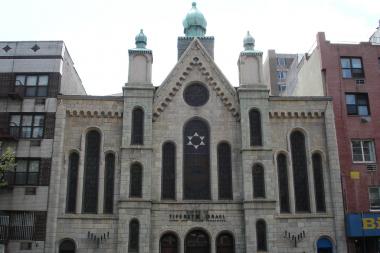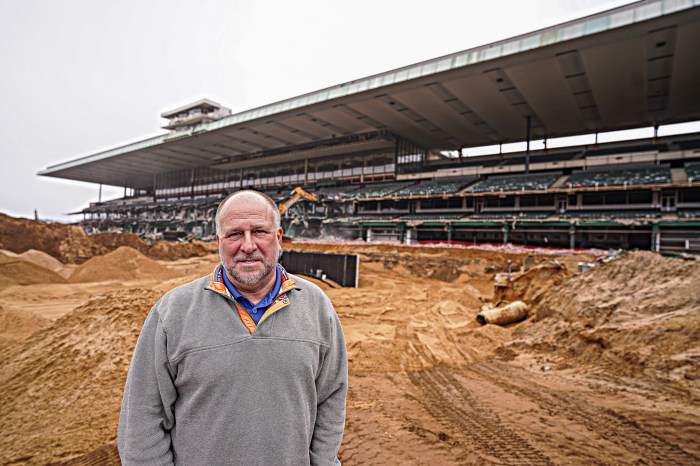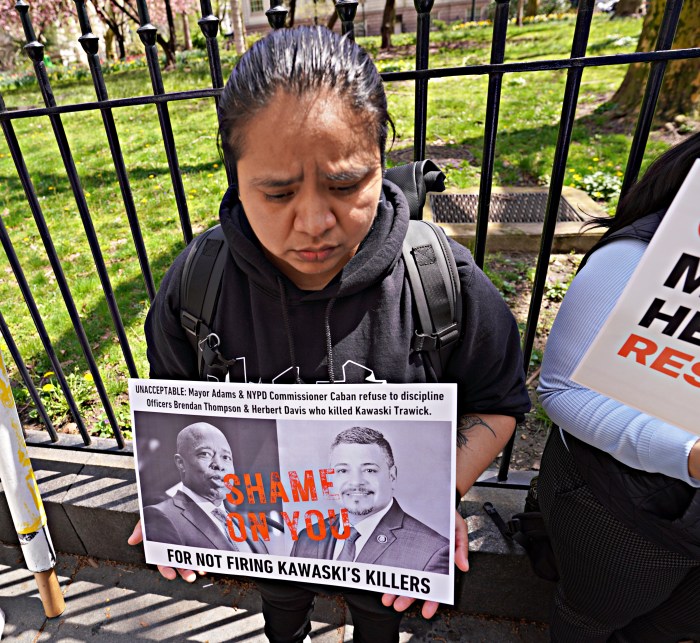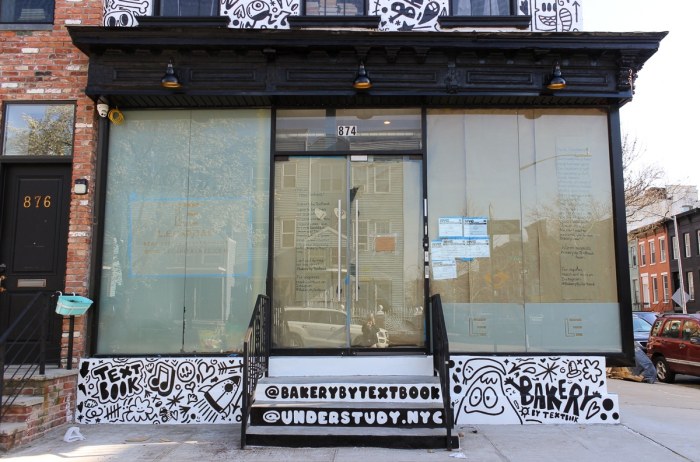BY ZACH WILLIAMS | Plans to renovate an E. 14th St. synagogue may depend upon the view of local residents who want to see the 150-year-old building designated by the city as a protected landmark.
Opposing views were aired March 25 before the Landmarks Preservation Commission, which will accept public comment for another 30 days.
Leaders from Tifereth Israel Town and Village Synagogue said there were no plans to demolish the building for development, a fear that spurred the new landmarking effort. However, they do want to renovate much of the structure. But such efforts will face restrictions if advocates convince the commission that 334 E. 14th St. merits protection.
Built in 1866, the building first came before the commission in the 1960s, though no vote was held. Advocates, led by the Greenwich Village Society for Historic Preservation, argued that the building front’s combination of German, Ukrainian and Jewish features is an attractive glimpse into the local historical landscape which too often disappears. More spoke in favor of landmarking than against.
“It is the pinnacle of our neighborhood,” said Jeannie Engelbagh, one of about a dozen local residents who testified for landmarking. “The East Village tends to rub out and extinguish all that made it vital in the past.”
Terry Cooke, a 40-year area resident, said, “So little of 14th St.’s east side is left to us.”
Opponents, meanwhile, downplayed the importance of the building’s architect. They said the current congregation has already altered the building since it bought it from the Ukrainian Autocephalic Orthodox Church in 1962, such as adding the stained-glass Star of David above the doors through which German Baptists long ago filed for Sunday services.
“The special character of this building is change,” asserted Rabbi Iris Rickman.
Synagogue members stressed that landmarking would raise costs just as a plan is underway to modify the structure to better serve community needs through a daycare center, disabled access and L.G.B.T.Q. services, according to Jaqueline Berkowitz.
“Allow us to grow and adapt,” she said.
Although grants could mitigate costs associated with maintaining a landmark, they would not meet the estimated $425,000 needed to renovate the facade, opponents said. But they hedged their bets by asking to exempt an 1889 structure that lies behind the house of worship, even if the commission designates the synagogue.

















